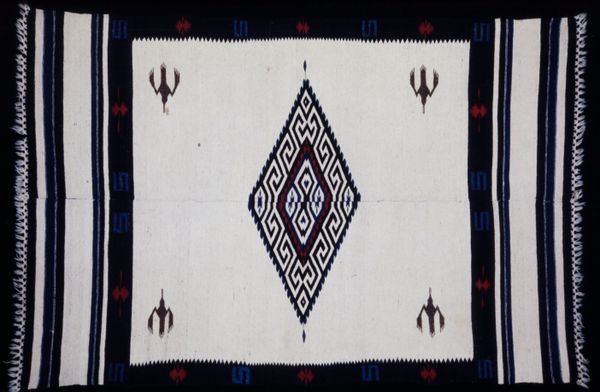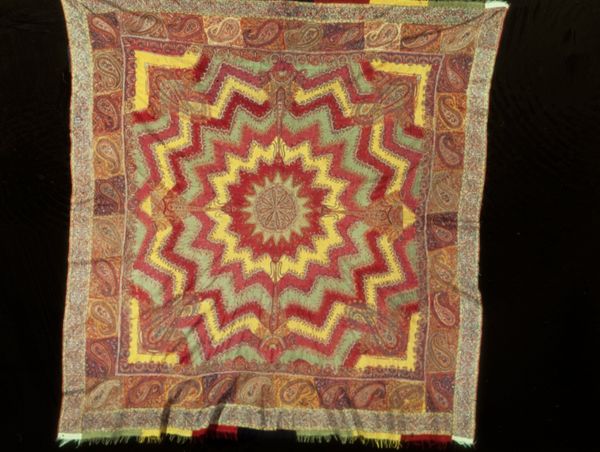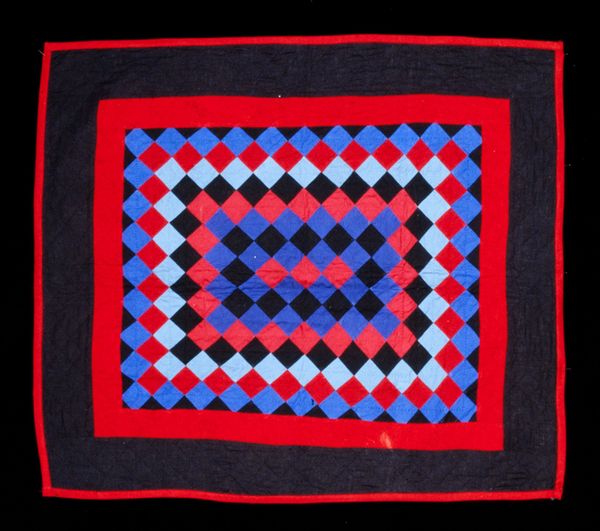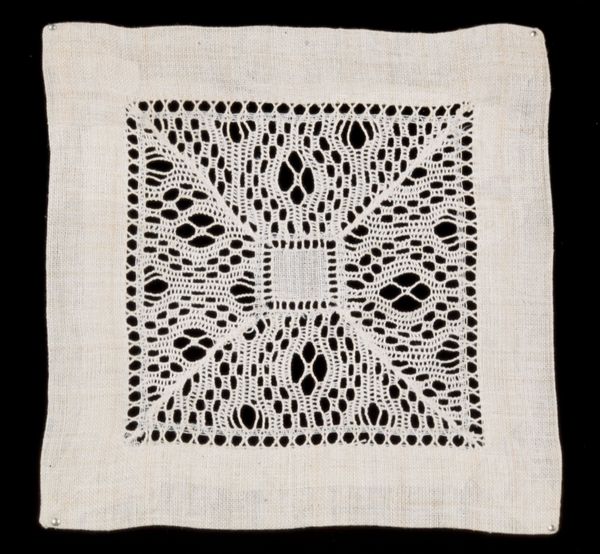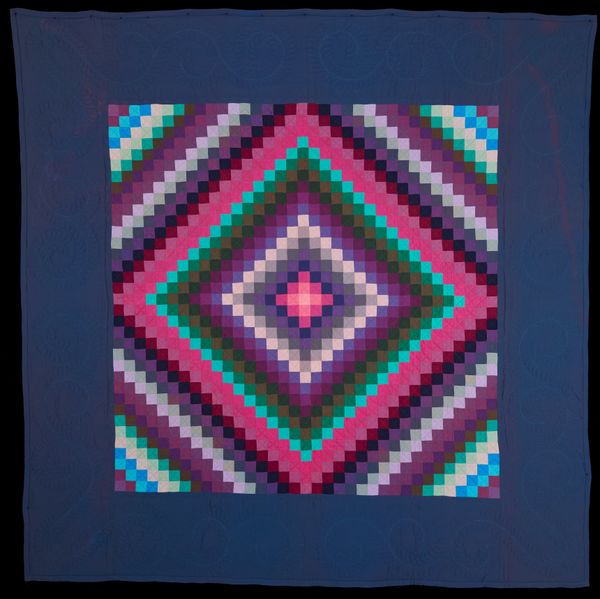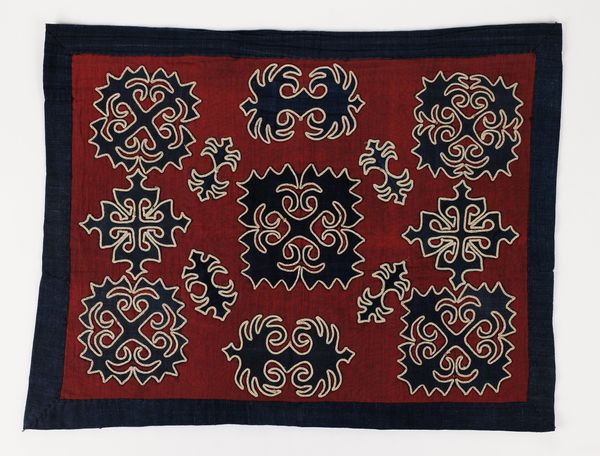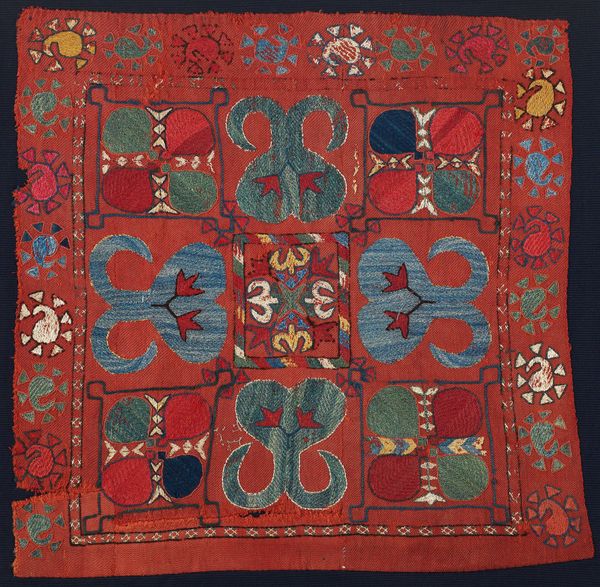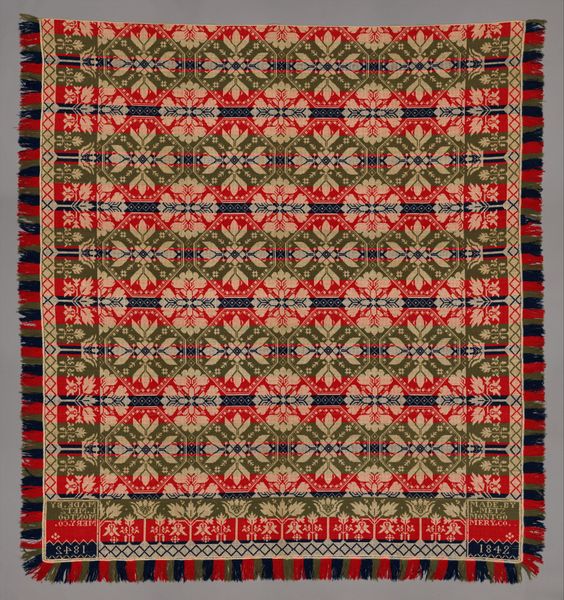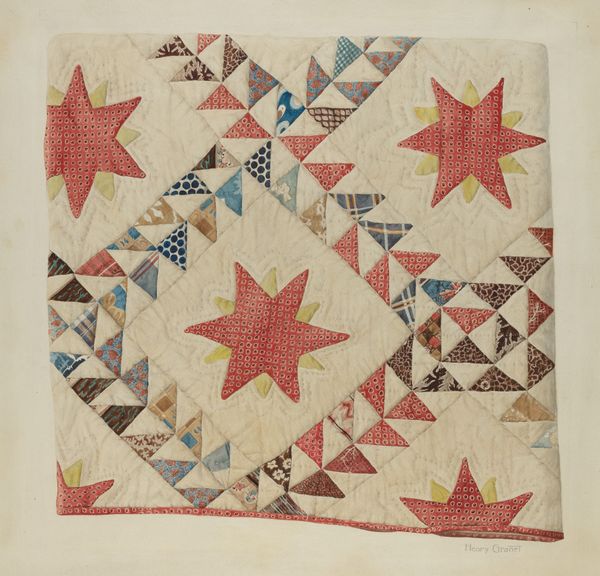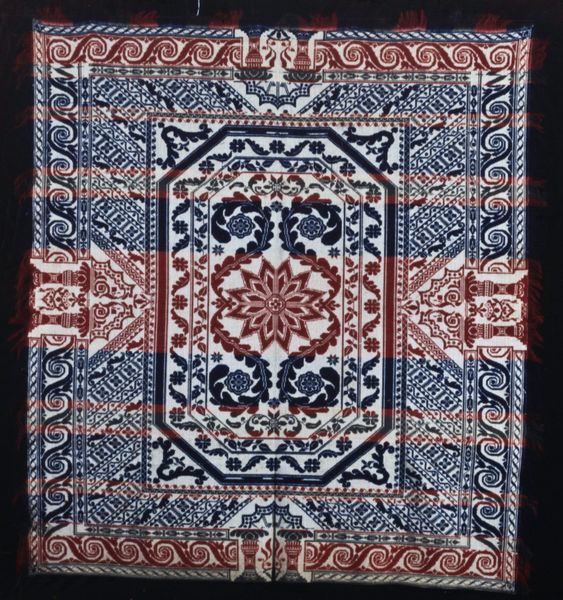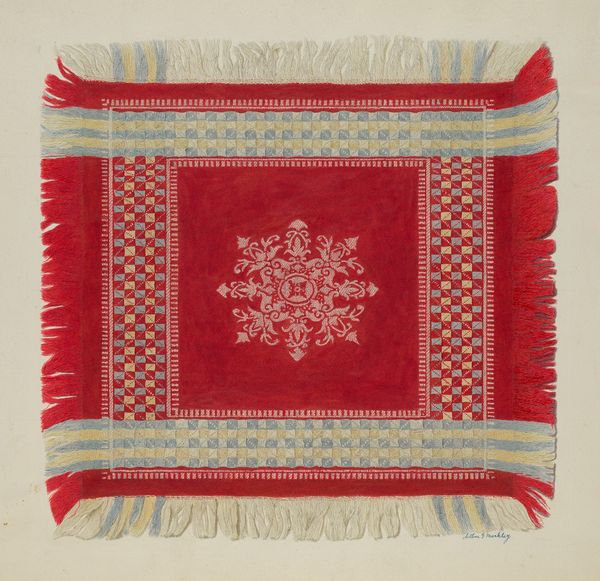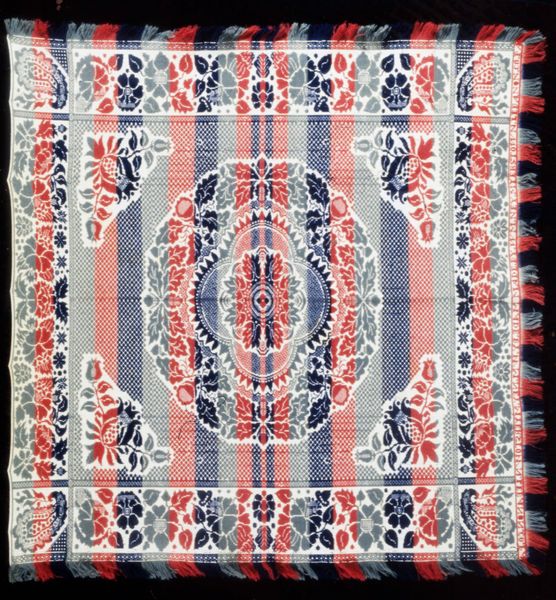
textile, cotton
#
textile
#
folk-art
#
geometric
#
cotton
Dimensions: 77 × 76 in. (195.58 × 193.04 cm)
Copyright: Public Domain
Curator: The "Star Quilt," a cotton textile piece, dates to the late 19th century and is currently held here at the Minneapolis Institute of Art. Editor: Wow, I'm immediately struck by its mesmerizing geometric design. The radial symmetry practically pulsates. Curator: These quilts are known to have originated with the Lakota people in the late 19th century, adapted from earlier hide paintings and beadwork designs. These quilts are given as gifts of honor. Editor: The arrangement of the diamond shapes creates an incredible sense of movement radiating from the central star, doesn't it? The repeating motifs in concentric circles of varying color create a visually stimulating experience, even overwhelming. Curator: Yes, that radiating star motif is powerful. Quilts such as this represent important social bonds within indigenous communities of the plains region. To receive one meant recognition and respect. It transcended a simple blanket, becoming a symbolic bestowal. Editor: You can almost feel the weight of meaning stitched into each patch. Speaking of, I also notice the interplay of red, white, and blue... Curator: Scholars have long discussed the adoption of such patriotic color schemes in relation to the American flag, representing a nuanced assimilation. However, these hues simultaneously signify native cosmologies, layered meanings expressed through color. Editor: Right. The formal use of such strong symbolic association complicates how we receive the art. I keep finding the star in the center and how that pulls the viewer's focus in so many directions; visually and figuratively. Curator: Exactly! As more than functional textiles, star quilts function as compelling records of indigenous resilience, adaptation, and enduring cultural expression. Editor: Absolutely, a piece with impressive visual impact and loaded meaning—a testament to cultural expression. Curator: Indeed. "Star Quilt" tells a fascinating story about how the formal aspects intertwine with indigenous sociopolitical contexts.
Comments
minneapolisinstituteofart almost 2 years ago
⋮
Pieced stars were popular in the United States from the 1840s to 1875, perhaps owing to the influence of kaleidoscopes. First manufactured in 1816, kaleidoscopes were perfected in the following decades. For this quilt, scores of red, white, and blue diamond-shaped fabric pieces were painstakingly stitched together. The alternating bands of color create a pulsating effect, like a glowing sun. Signs of heavy washing tell us this quilt functioned as a bedcover. Though delicately constructed, it was still expected to withstand the rigors of daily use.
Join the conversation
Join millions of artists and users on Artera today and experience the ultimate creative platform.

